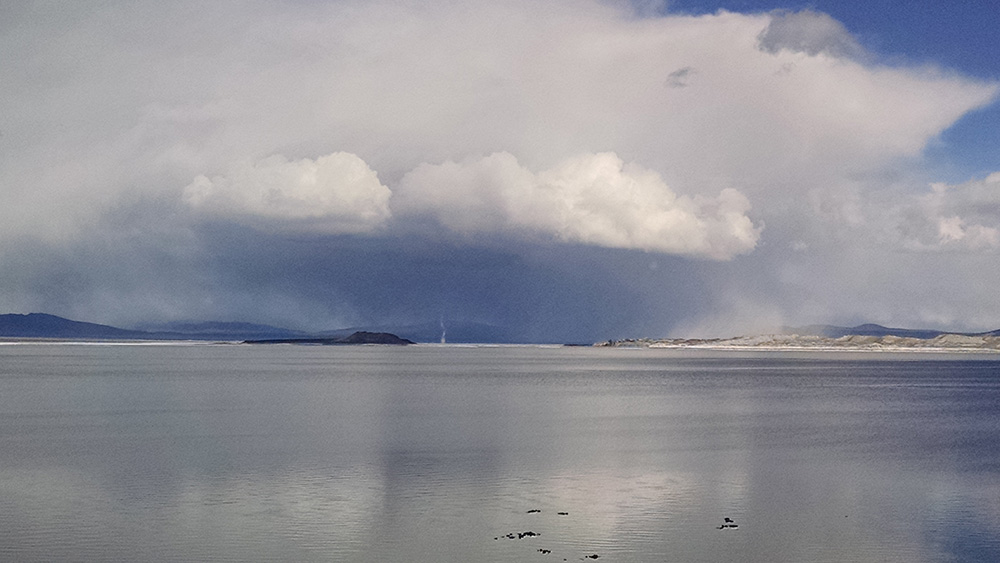

The March 1st snow surveys in the Mono Basin were completed on February 25th, and measured 33% of average snow water content. Even though the snowpack doubled in February, this is only a slight improvement over the February 1st surveys, which found only 23% of average snow water content at the five snow courses where snow is measured. The February 1st surveys, completed at the end of January, found the second-lowest snowpack on record in most places and a record low snowpack at Gem Lake. As of March 1st, the Gem Lake snowpack now ranks the seventh-lowest ever measured (out of 55 years).
Since the snow was last measured in person on February 25th, the remote snow sensor at Gem Pass has reported a 6″ increase in snow water content, which exceeds the average March increase of 5.3″ at that location. But the snowpack is starting off the month so far behind, it would still need to double to catch up to average.
At Gem Pass, in the Rush Creek drainage, the increase in snow water content from last week’s storm exceeds the increase in most areas. The Lee Vining Creek drainage likely only picked up closer to 1″ of water content. In the Lee Vining Creek drainage, the March 1st snow surveys only measured half of the snow water content measured at this time last year. And last year was one of the lowest years on record for snowmelt runoff.
Things can change rapidly, as they did at Gem Pass last week. But the window of opportunity for having a better runoff year than last year is rapidly closing. A repeat of last year would allow Grant Lake Reservoir and Rush Creek to barely scrape by with enough water to stay above the minimum reservoir level and maintain minimum flows in Rush Creek through the warm season. A drier year than last year could be disastrous for the Rush Creek fishery, with warm water flows below Grant Lake Reservoir just 10 cubic feet per second or lower in late August. Now is the time for the March Miracle to begin!
